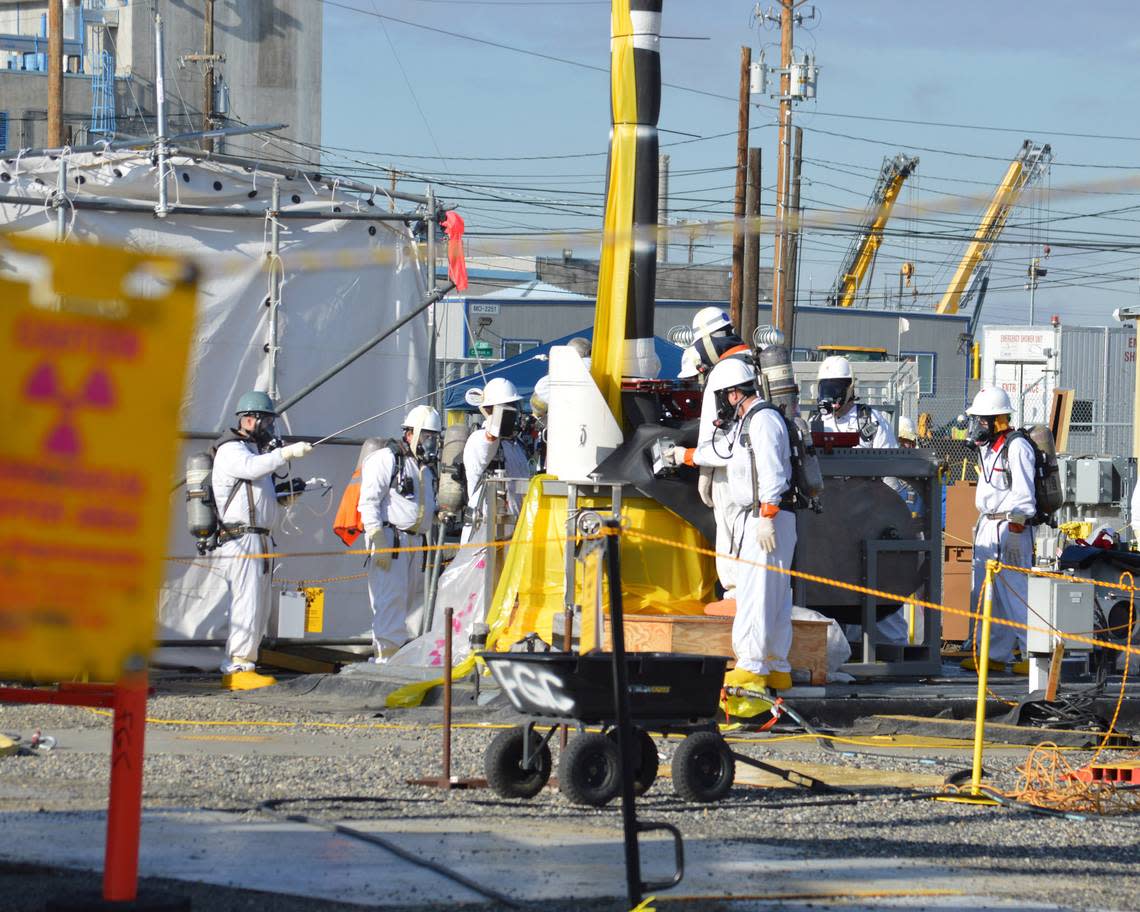Editorial | Hanford site nuclear deal is hopeful development. But will it work this time?

There’s a new proposed plan for one of the largest and most expensive environmental cleanup projects in the world — the Hanford site adjacent to the Tri-Cities.
There’s much to like in the plan, but vigilance will be needed to ensure the Department of Energy and its regulators, the Washington state Department of Ecology and the U.S. Environmental Protection Agency, follow through with the proposed plan they spent nearly four years negotiating.
Tri-City residents have been disappointed by decades of missed deadlines and broken promises on the site that Columbia Riverkeeper calls out as the most contaminated place in the Western Hemisphere and the most long-lived threat to the health of the Columbia River.
The Tri-Cities area’s fraught relationship with the Hanford site began with local residents and Native Americans being forced from 670 square miles near the Columbia River, including the original town of Richland, to make way for plutonium production.
All Americans benefited from the nuclear material processing that occurred there during and after World War II. All Americans therefore are on the hook for the legacy of that work.
Without strong advocacy for federal funding from Sen. Patty Murray, D-Wash., with support from Sen. Maria Cantwell, D-Wash., and the Tri-Cities current and past representatives, the cleanup would be even further behind.
Consider that as recently as 15 years ago, vitrification of the 56 million gallons of radioactive and hazardous tank waste was legally required to be started by 2019. An earlier plan called for having all the waste vitrified and ready for permanent disposal by then.
Now that deadline has passed with none of the waste yet vitrified.
The treatment project has been delayed by technical issues and a lack of federal funds.
This year Murray has used her position as the chair of the powerful Senate Appropriations Committee to appropriate a record-breaking $3 billion for Hanford maintenance and cleanup this year.
The nation will expect results.
The new agreement negotiated by DOE and its regulators holds the line on the latest deadlines in a federal court consent decree to start turning tank waste into a stable glass form. Vitrification of the least radioactive waste must start next year and vitrification of the high level radioactive waste must begin in 2033.
But the agencies also reached agreement on how to treat some of the least radioactive tank waste — which may be 90% of the tank waste — more quickly and at a lower cost.
Those are important goals as estimates of the remaining cost of Hanford cleanup are as high as $640 billion, and the longer cleanup takes the more it will cost.
The least radioactive waste in 22 of Hanford’s 149 leak-prone single-shell tanks could be turned into a concrete-like grout
Grouting has been considered and dismissed for decades, but grouting technology has improved and, most importantly, the current plan would not allow the grout to be buried at Hanford, where moisture could make it less durable. It could be sent to a Texas landfill in a salt formation devoid of water.
Hanford Communities, a coalition of local governments near Hanford, has said it is “excited and optimistic” about the potential for grouting.
The Government Accountability Office has advocated for grouting rather than vitrifying some of the tank waste, saying it would allow some waste treatment to be done sooner and could save tens of billions of dollars.
The last time a significant change in plans and deadlines for tank waste treatment was made it was because the state of Washington, increasingly concerned about missed cleanup deadlines, took DOE to court and got a new plan approved.
It’s promising that the new proposed plan had buy-in from both DOE and its regulators.
